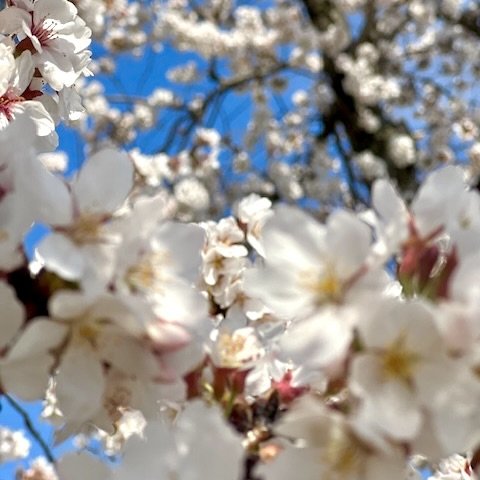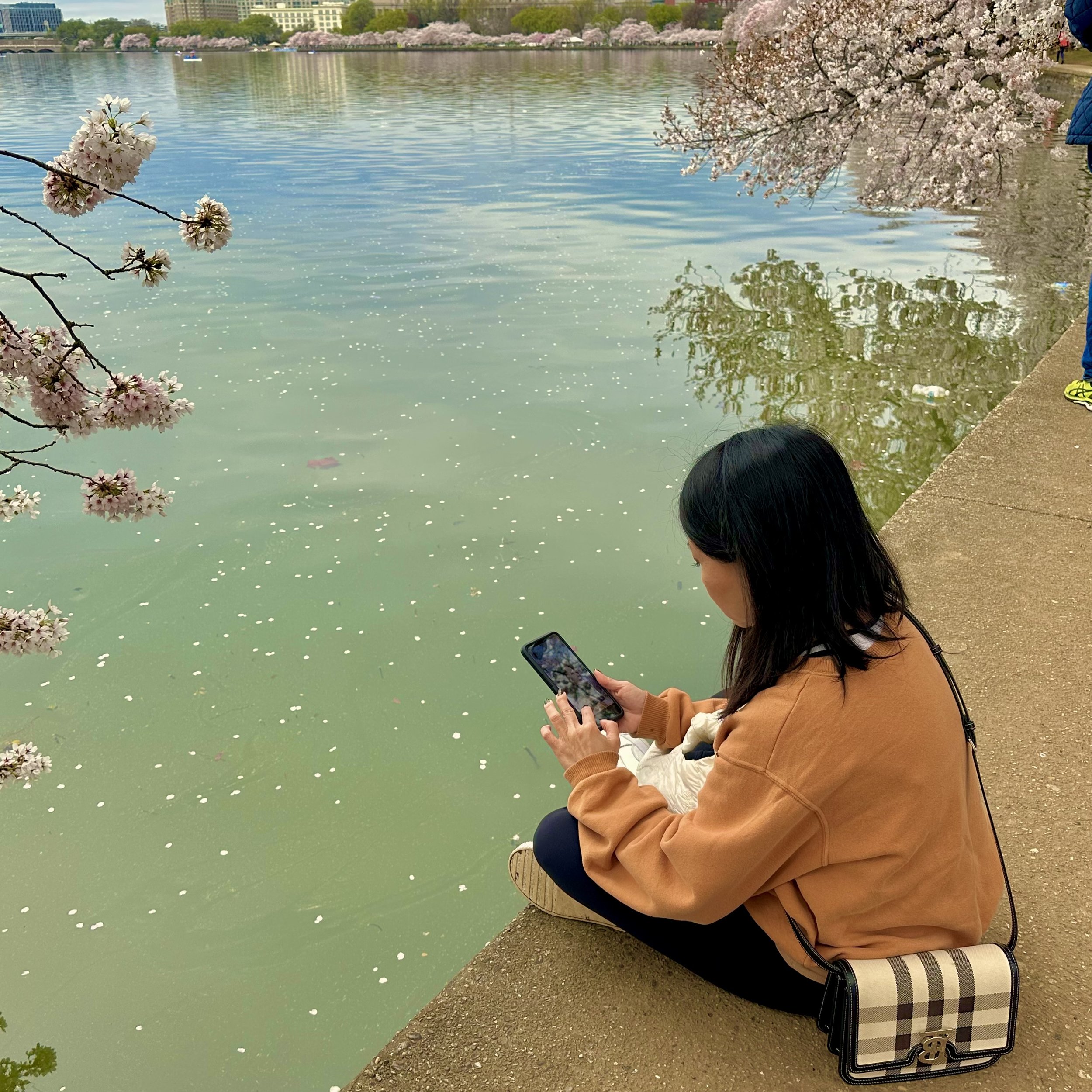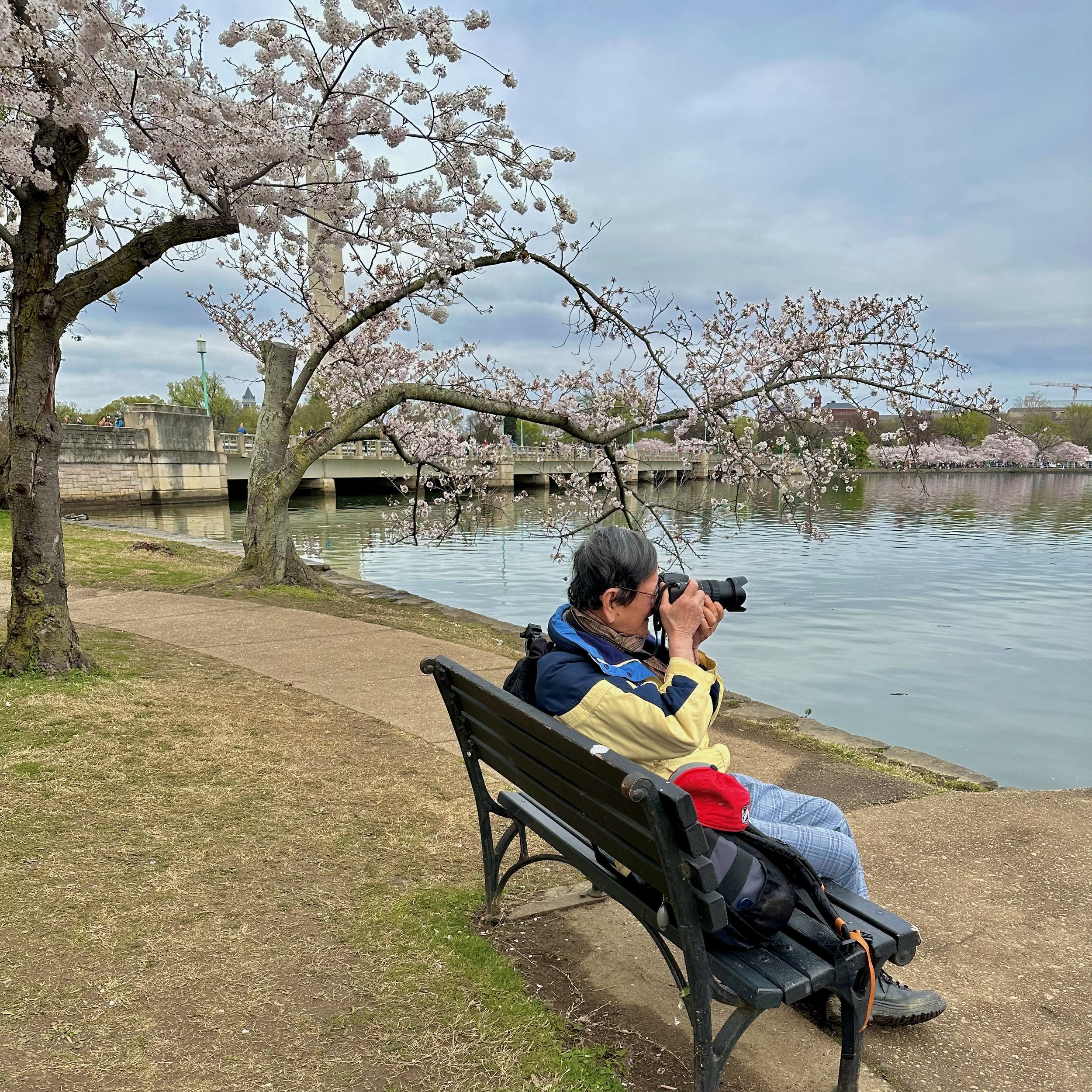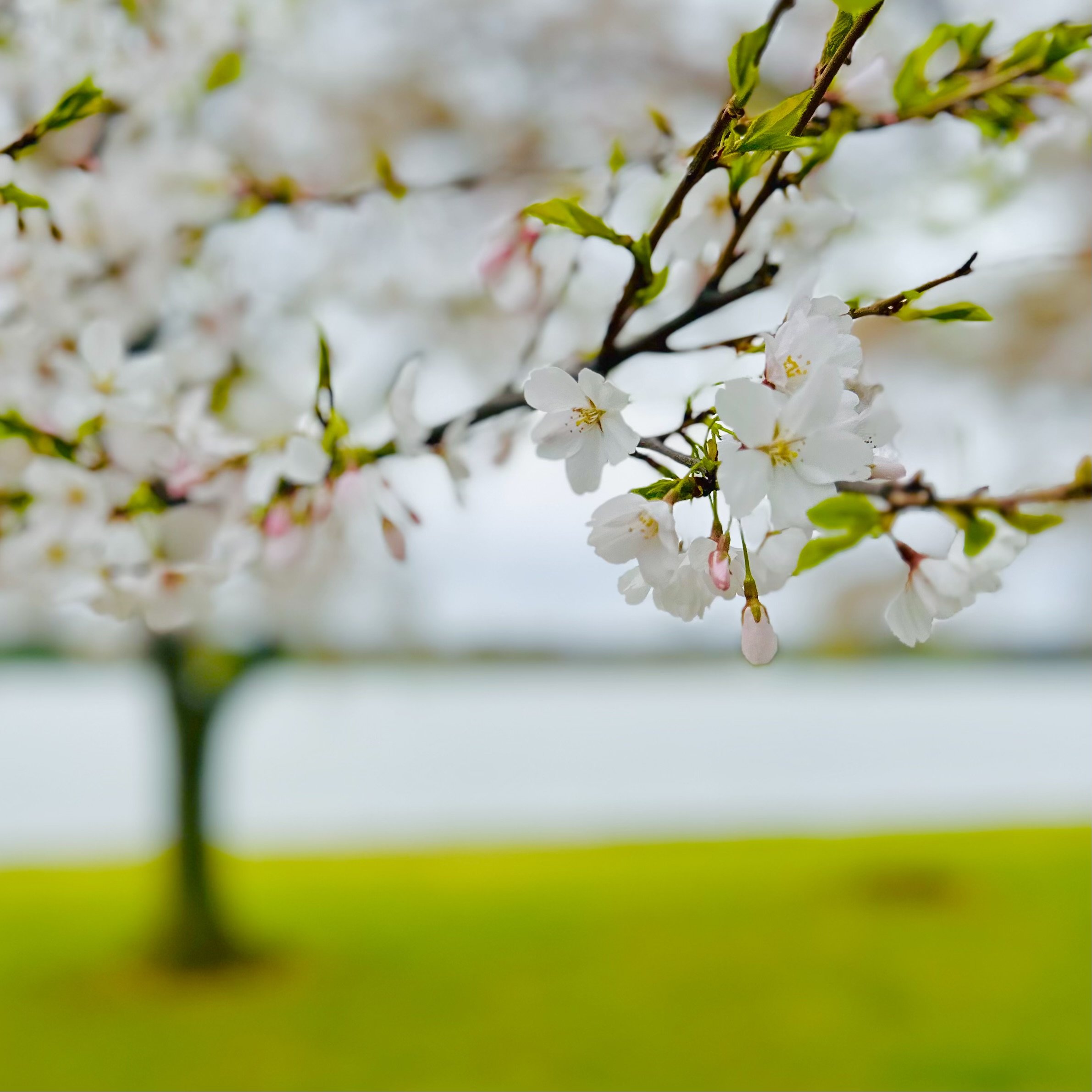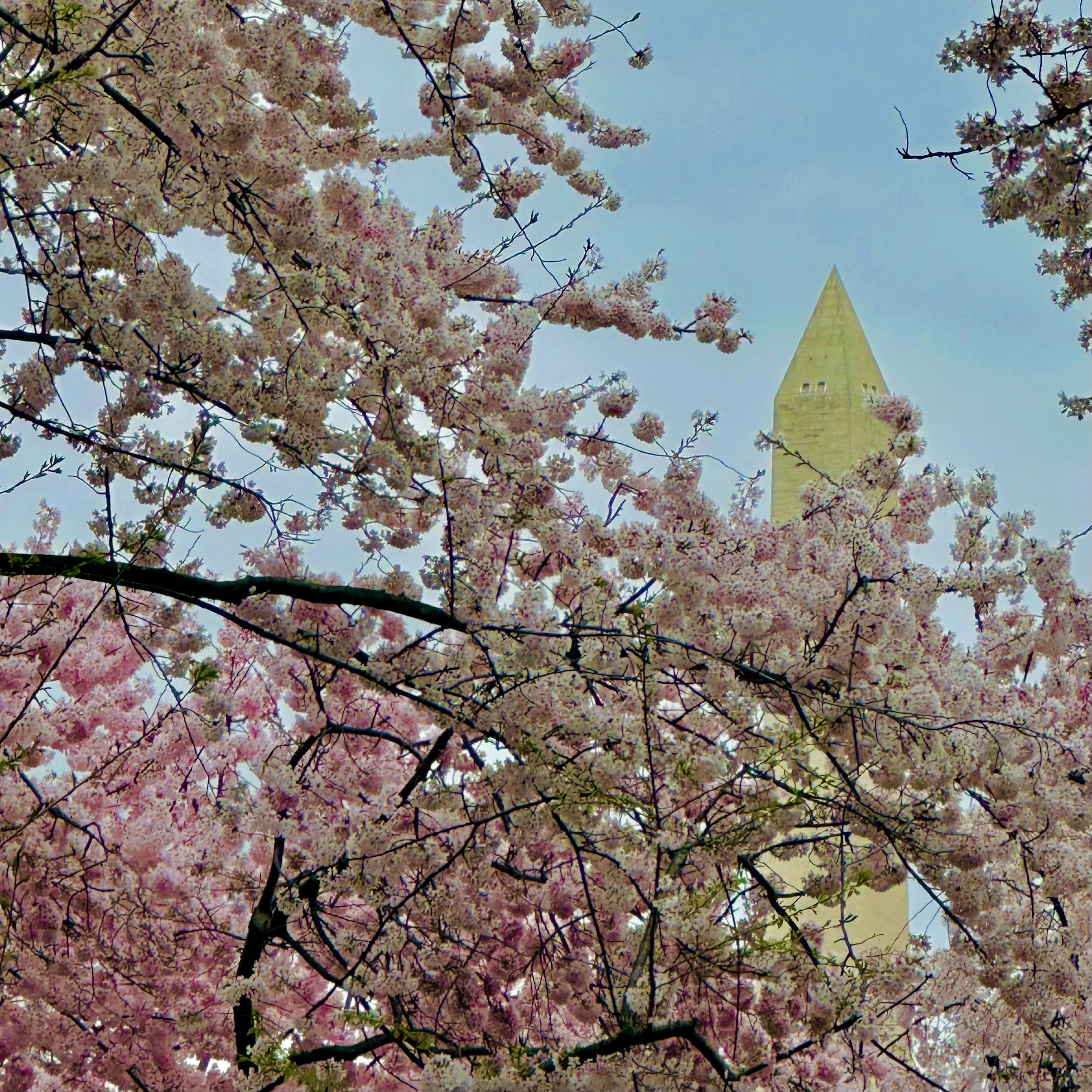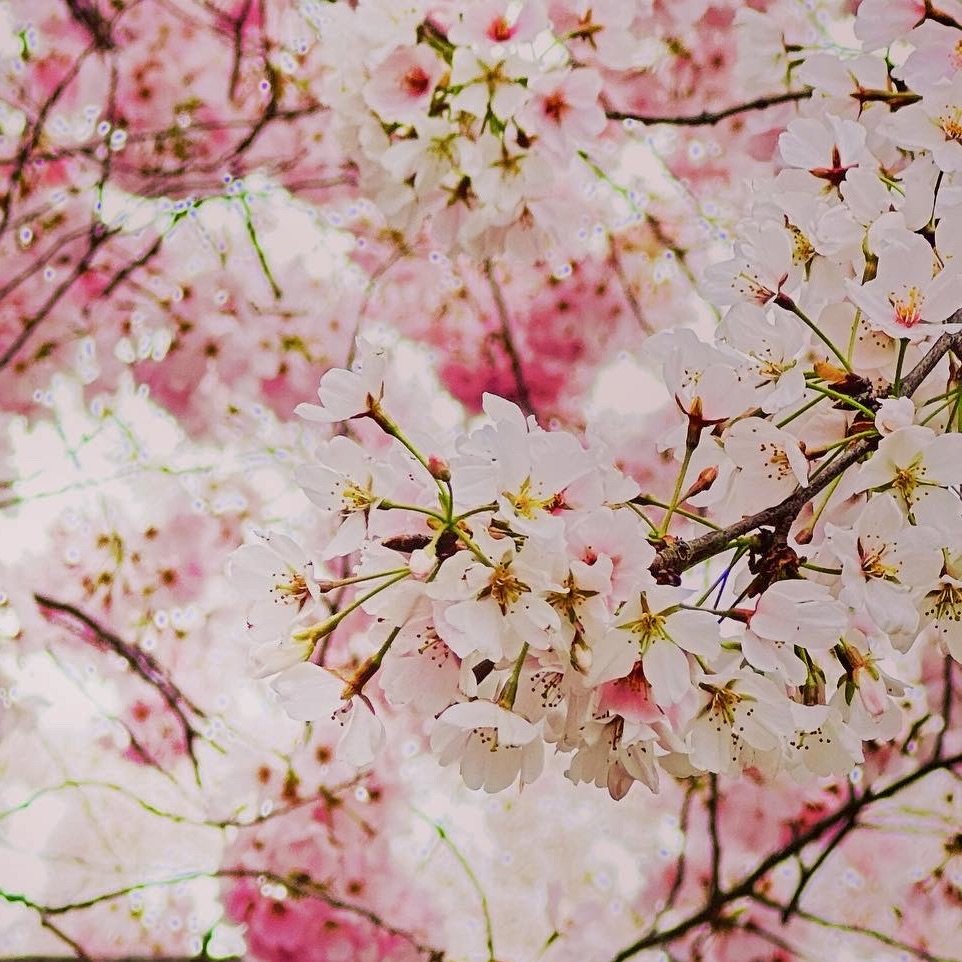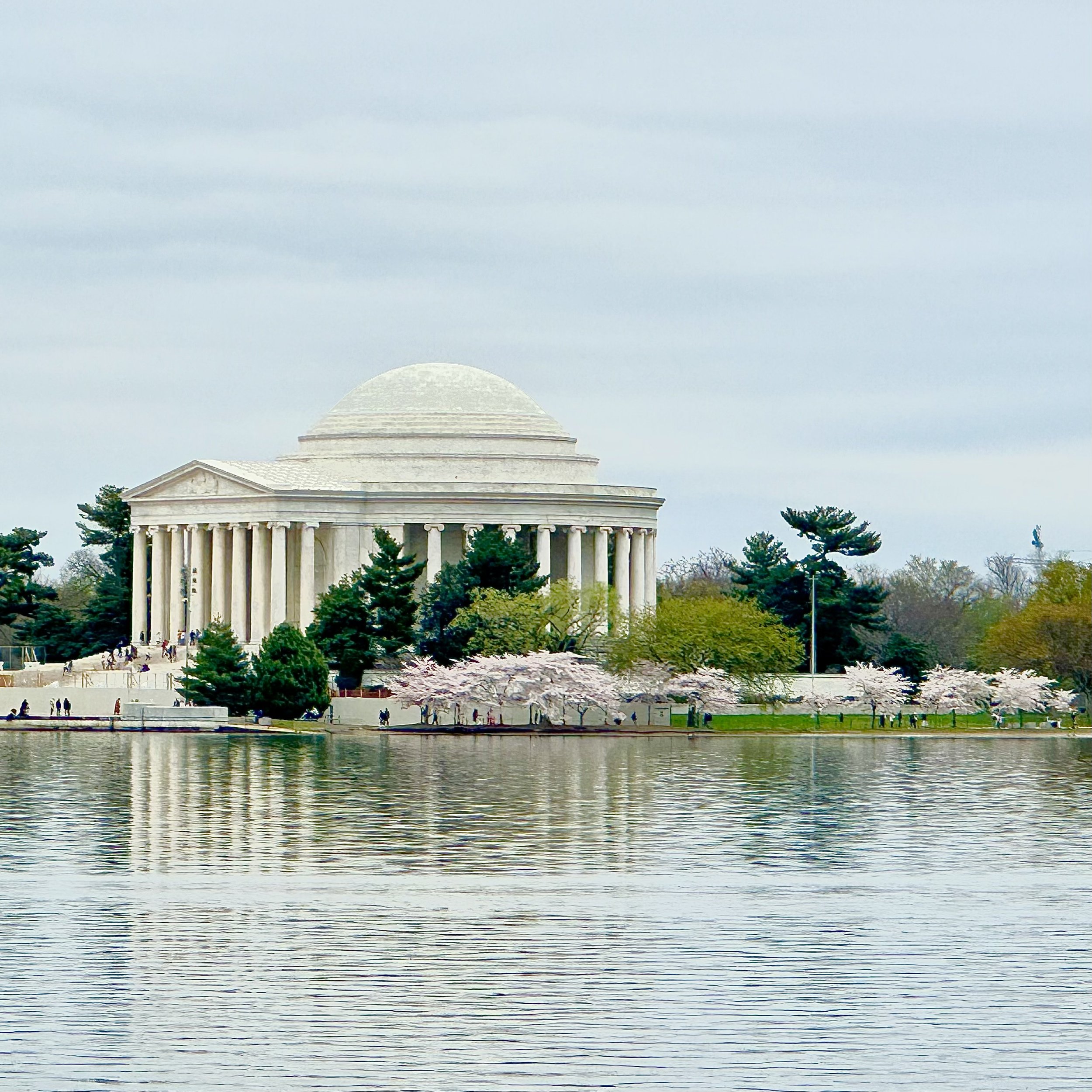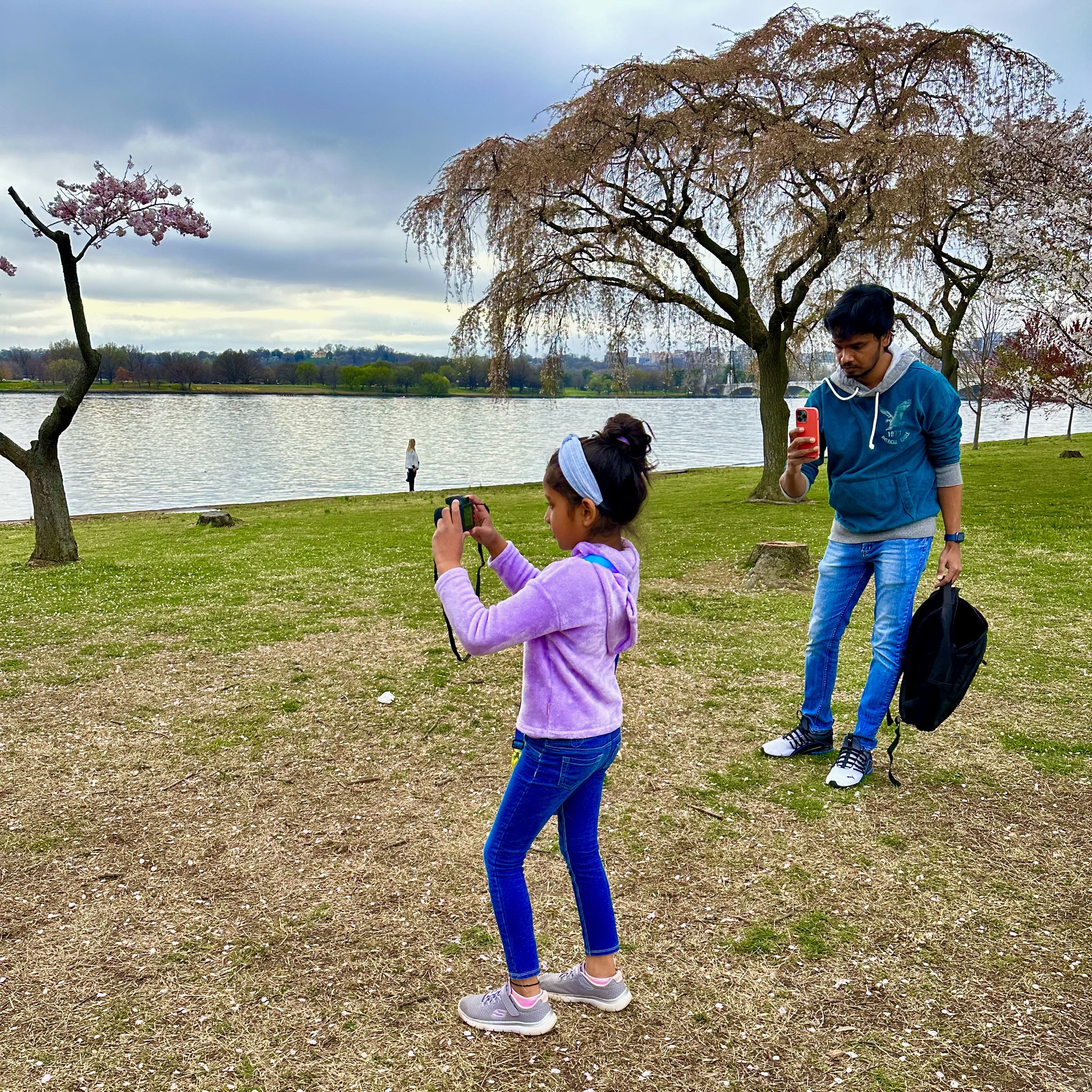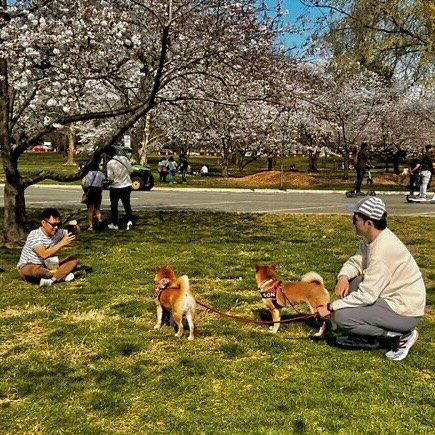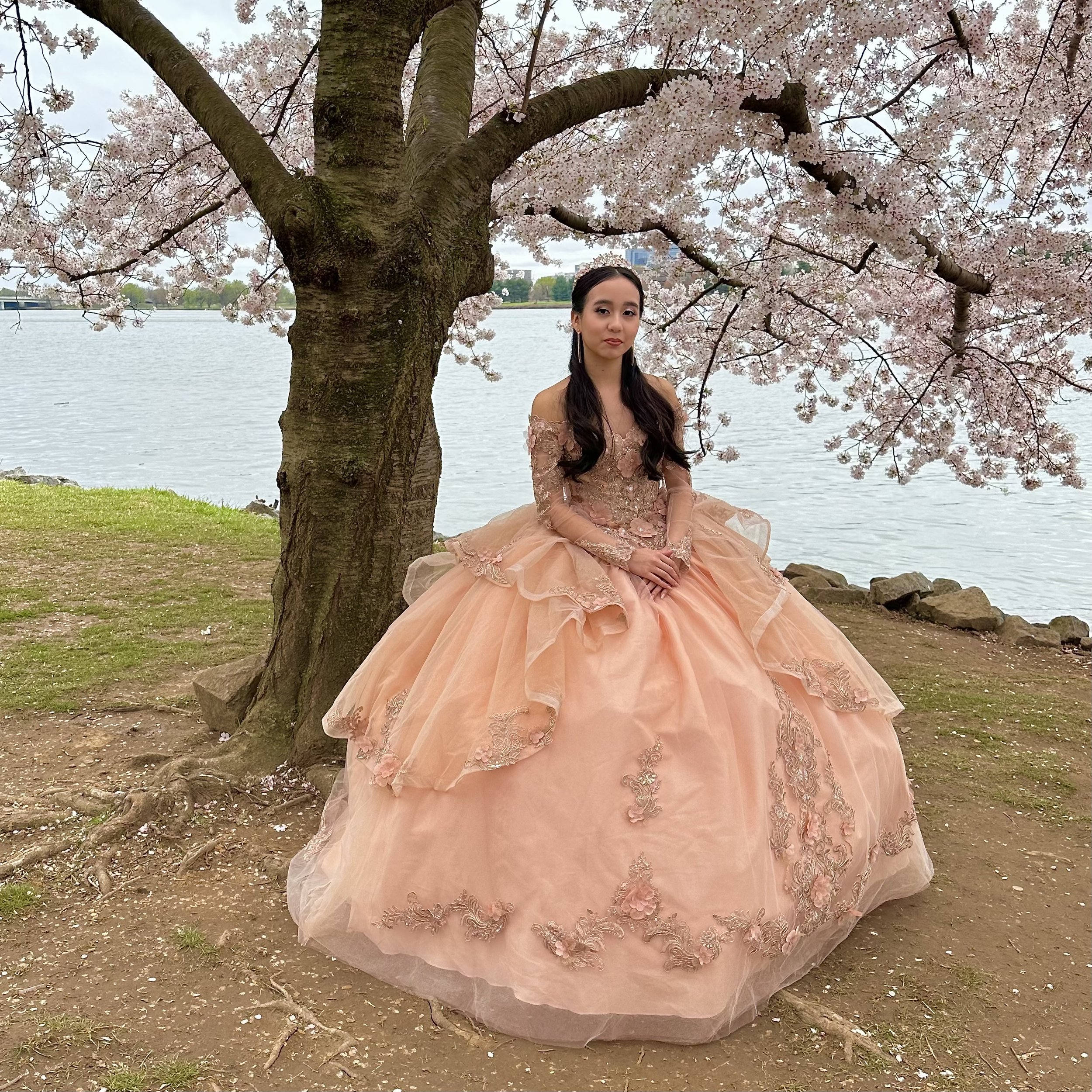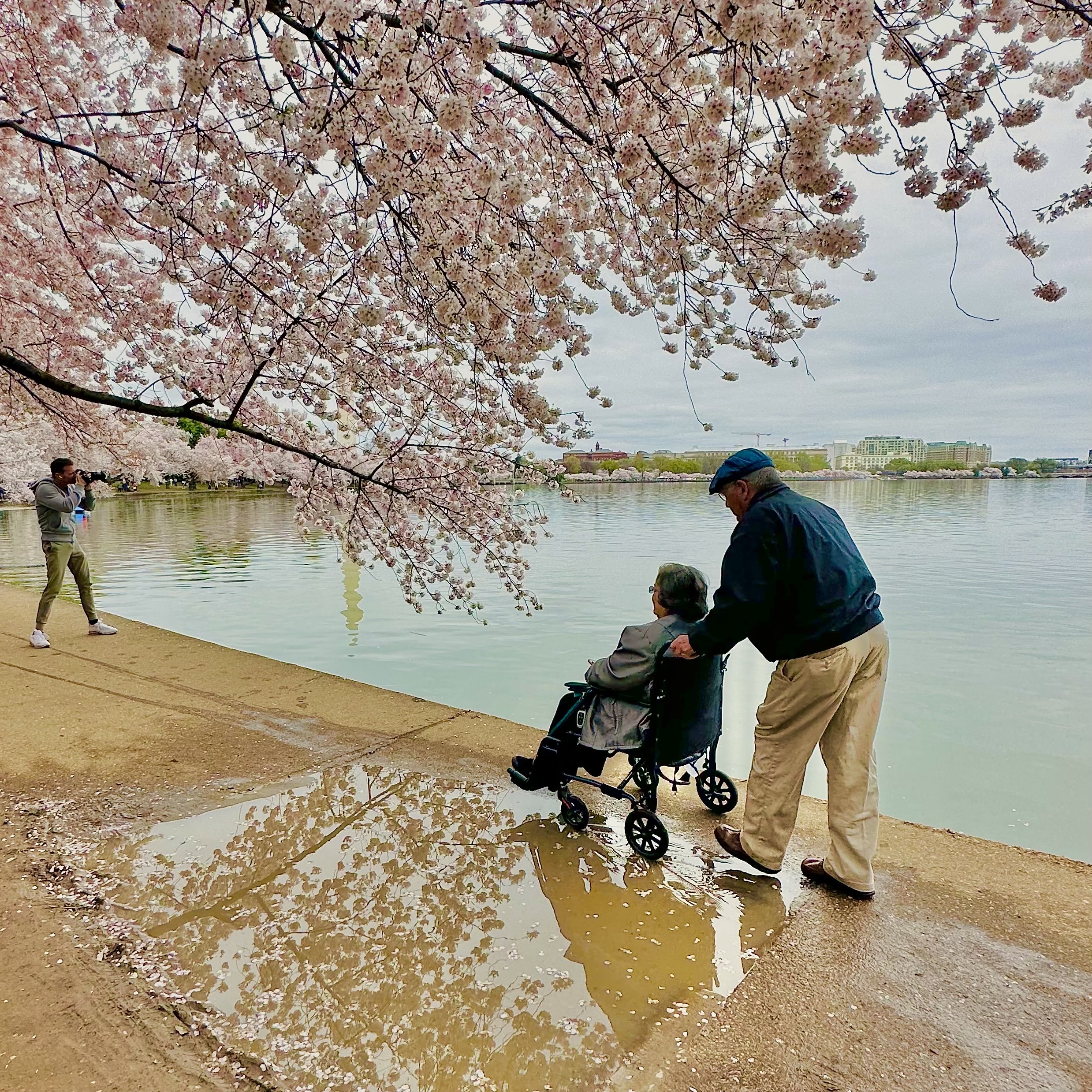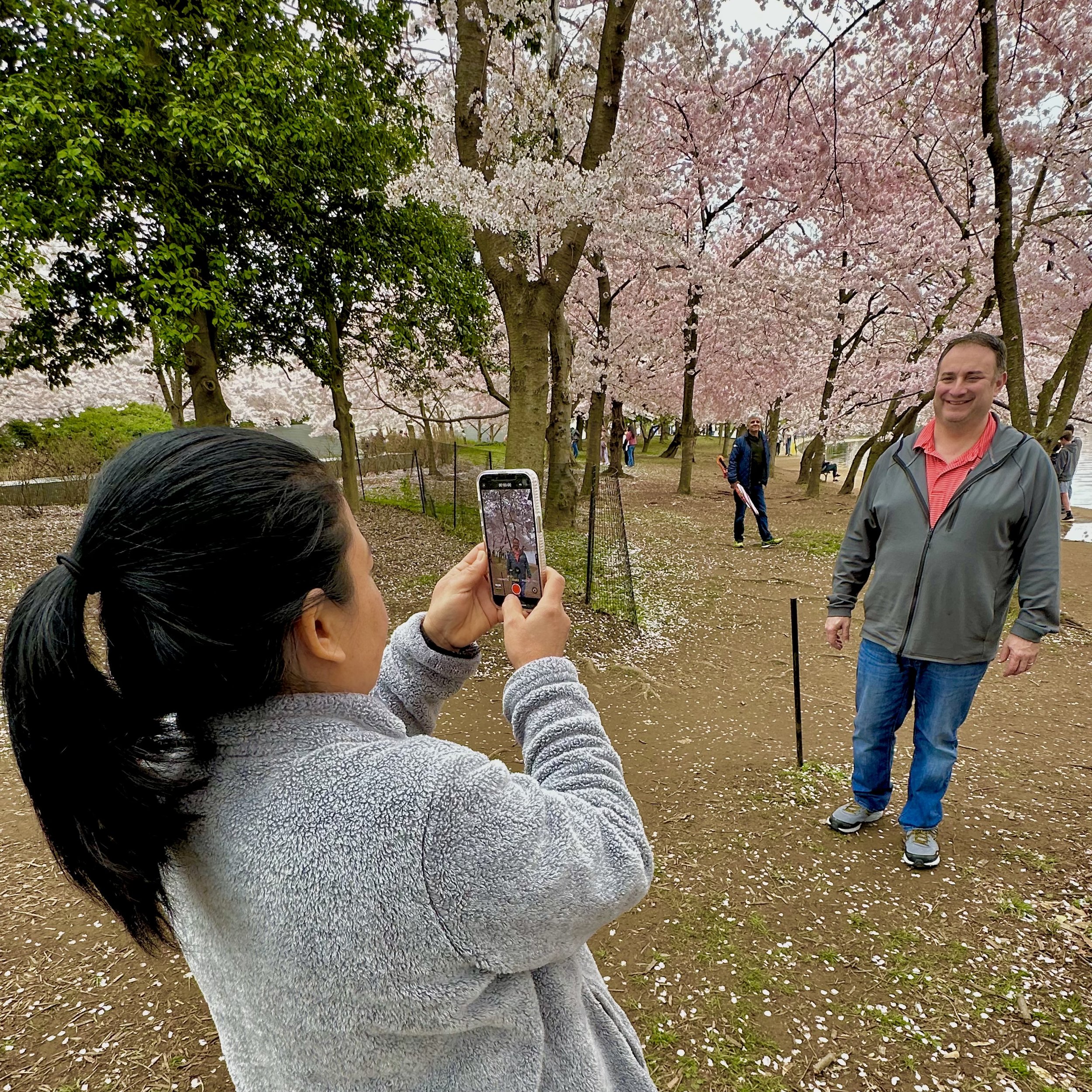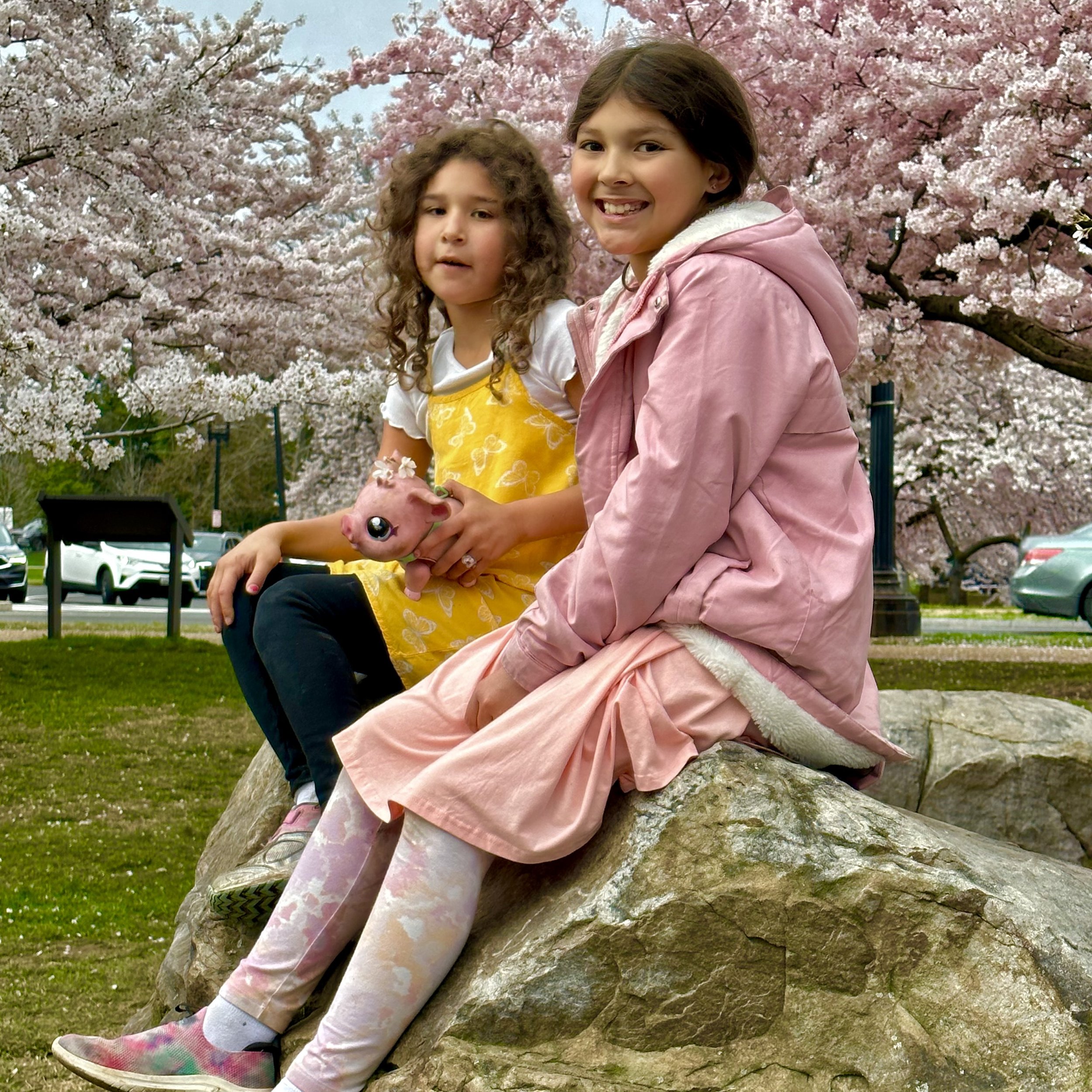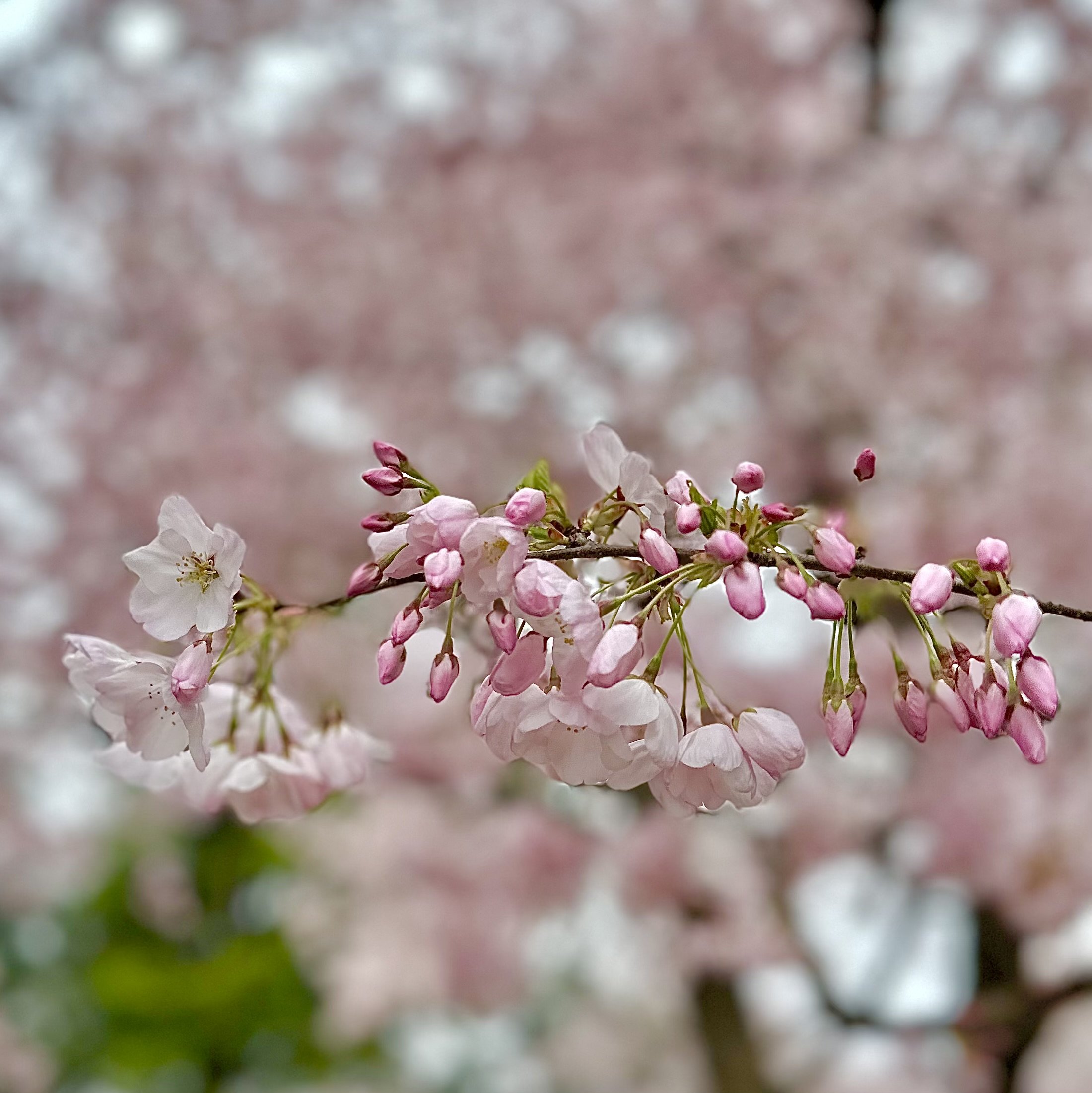Cherry Blossoms Bring Spring to DC
It's that special and highly anticipated time of year again in Washington, DC. Refreshing weather with plenty of sunshine signals it’s time to step outside and view Spring's arrival everywhere. A complete seasonal roster, including daffodils, are found mounded through the parks resembling mini-suns as they show off shades of yellow and orange, swaths of tulips widely broadcast their bright colors, and young grasses sway in the breezes. Trees are blooming, and new leaves are unfurling. Even with the evergreens throwing off abrasive pollen, I feel connected to a very happy place and time of the year. And the highlight of Spring in DC are the millions of white and pink petals in bloom puffed out like marshmallows on the infamous Japanese cherry trees!
For over a decade, I've visited the 107-acre Tidal Basin in West Potomac Park during March and April, wandering slowly in awe and watching visitors show admiration and respect for these landmark trees. More than 1.5 million global admirers annually visit part of Washington's national image. Every mode of transportation is used, bringing travelers to this renowned destination to quietly gaze at the pale petals on long branches that are densely displaying blooms on thousands of mature Japanese cherry trees.
I had wondered where these artful trees originated. I learned that planting the cherry trees here was created in 1912 as a friendship gift to the United States from the people of Japan. In a ceremony on March 27, 1912, First lady Helen Taft and Viscountess Chinda, wife of the Japanese Ambassador, planted two cherry trees on the northern bank of the Tidal Basin. Amazingly, the first two trees still stand at the terminus of 17th Street Southwest in Washington, DC.
The flowering cherry tree, or "Sakura," is a hardy flowering plant in Japan that generally doesn't produce cherries for eating. Two of the most common varietals of the Sakura in Washington, DC, are the Yoshino and Kwanzan. Mostly Yoshino cherry trees line up and circle along the Tidal Basin and spill north onto the Washington Monument grounds, their canopies appearing like clouds.
I have encouraged readers to visit sites and venues in their community, experiencing their neighborhood locale. But it is easy to invite everyone to share and visit my backyard here in the nation’s capital to enjoy DC's Cherry Blossom Festival, held five weekends each March and April. Introduced in 1927, the Festival continues to expand each year. During this time, you'll find area restaurants featuring special petal-topped cocktails and unique menus showcasing the celebrated cherry. I sampled tangy cherry beer sitting at a picnic table next to gently swaying trees in full bloom while listening to jazz performed by local bands. I even found a giant pink felt squeaky blossom toy I couldn't resist buying for my Australian Terrier, Henry so that he can enjoy the season, too.
Walk through any of DC's neighborhoods and see everything from vibrantly painted blossoms on storefronts and contests for the best Petal Porches, signifying winter's end. City buses and subway cars advertise this celebration commemorating the 2000 cherry trees gifted as a token of friendship from Mayor Ozaki of Tokyo to the United States in 1909. Wouldn't it be wonderful if he could see how the trees have brought people together along the Tidal Basin from every walk of life as they've matured and grown over the decades?
Following the paths, I make my way through the crowds watching them take pictures of family members posing, taking selfies, or zooming in on the long branches loaded with fairy-like blooms. Within the happy wanderers, I've witnessed couples in love, tweens posing on boulders, and picnickers sitting on blankets spread with food and brushes, waiting to paint images of the cherry trees on canvas. I even observed a beautiful Mexican-American young lady posing demurely for her portrait in a quinceañera gown to celebrate her 15th birthday. She was just as stunning as the surroundings!
I never realized the rich symbolic meaning of cherry blossoms in Japanese culture. They symbolize birth, death, beauty, and violence. They are a central motif in Japan's worship of nature while historically signifying a short but colorful life, much like the samurai. The cherry tree is symbolic of human life. Thinking of living in today's world, can't we identify with the highlights we shine in and the hardships we face and strive to overcome continuously? Using that as a cue, I know when I locate a blooming cherry tree in Spring, I'll use it as a constant reminder to live life to the fullest!



